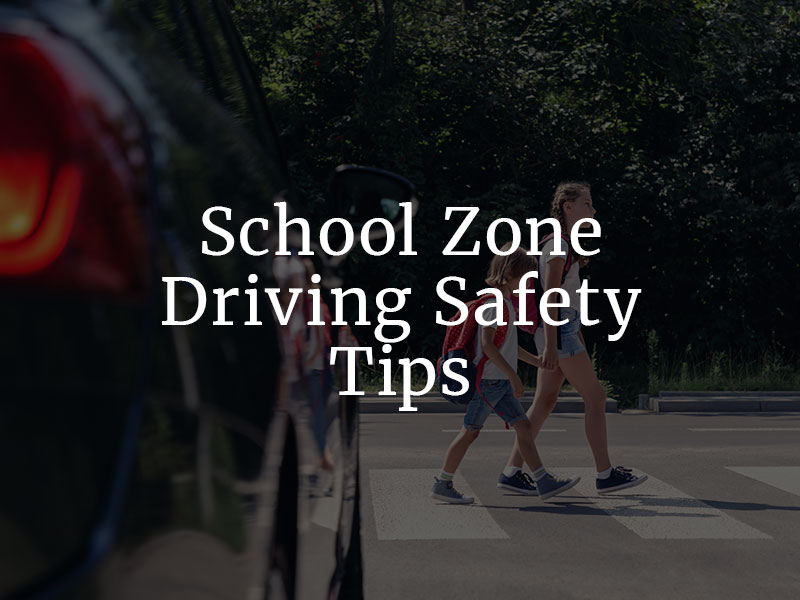School Zone Driving Safety Tips
The back-to-school season is an exciting time for families in Southern California. In the hustle and bustle of going back to school, do not forget to put safety first. School zone safety is something your family should review together every year. Each week in the United States, five teenage pedestrians lose their lives in traffic accidents. Teaching pedestrian safety is paramount, but it is also important to refresh your safety strategy as a driver. As any driver passing through school zones in California, do your part to prevent pedestrian injuries.

Put Your Cellphone Away
It is not only dangerous to text and drive – it is also against the law in California. The use of a handheld phone or electronic device to talk, text or engage in other activities is illegal. Drivers under 18 years old also may not use hands-free devices while driving. In 2017, 3,166 victims lost their lives in the U.S. because of distracted drivers. Cellphones are the most common cause of driver distraction. California’s ban on cellphone use behind the wheel combats distracted driving and improves roadway safety.
Avoid distracted driving in school zones by putting your cellphone away in your glove box, purse or trunk. If you need to make a call or use the GPS, do so using hands-free technology such as Bluetooth. Avoid looking at your phone while driving. The National Highway Traffic Safety Administration says the amount of time it takes to read or send a text message (just five seconds) at 55 miles per hour is equal to driving across a football field blindfolded. Do not engage in other forms of distracted driving such as eating, drinking, personal grooming or talking to passengers, either.
Slow Down
Speeding is a reckless driver behavior that can put lives at risk – especially in school zones. School zones in California have low speed limits (no more than 20 miles per hour) to increase pedestrian safety. If the school zone lights are flashing, slow your vehicle down to the appropriate speed. Lights usually flash once in the morning and once in the afternoon. Continue at this speed until you are safely out of the school zone. Reducing your speed can help you hit the brakes in time to avoid colliding with a vehicle or pedestrian.
Expect the Unexpected
School zones are so dangerous for pedestrians due to the unpredictable nature of small children. Children may dart out from behind parked cars or step off the curb when they do not have the right-of-way. Although most school zones do their best to hire safety patrols, crosswalk supervisors and traffic controllers, they cannot always prevent a child from running out into the road. As a driver, increase child pedestrian safety by expecting the unexpected.
Studies have shown as many as 80% of students engage in unsafe street crossing behaviors in school zones. Many assume they can safely jaywalk and step in front of vehicles in school zones. Others cross the street illegally while distracted by cellphones. Drive slowly and keep your foot hovering over the brake when passing through a school zone. Use extra caution when approaching a crosswalk. Keep your eyes on the road to watch out for children abruptly darting in front of your car.
Pass Through Safely and Efficiently
Traffic jams, aggressive drivers and illegal maneuvers such as U-turns in school zones increase the risk of pedestrian accidents. If your route takes you through a school zone, follow the instructions and obey crossing guards. Follow the rules for child pick-up or drop-off. Do not make a U-turn, stop on the side of the road, tell your child to cross the street at an unmarked spot or otherwise engage in dangerous driving behaviors while passing through a school zone. Get to the other side as safely and efficiently as possible.

